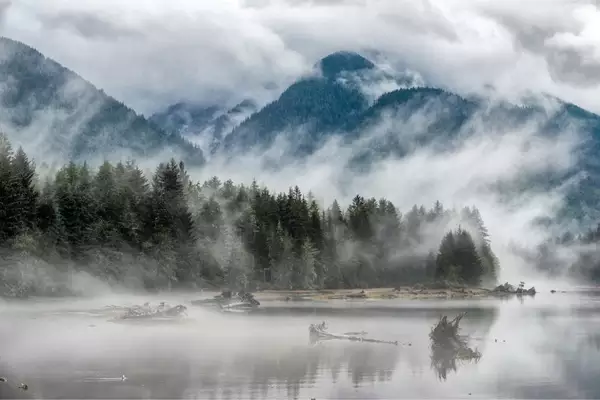Recent studies have highlighted that the phenomenon known as “rivers in the sky,” or atmospheric rivers (ARs), is becoming increasingly intense in India due to extreme weather events such as devastating floods and heat stress, exacerbated by global warming.
About Atmospheric Rivers (ARs):
- Definition: Atmospheric rivers are long, narrow regions in the atmosphere that transport significant amounts of water vapor from the tropics to other regions.
- Dimensions: Typically, an AR measures about 2,000 km in length, 500 km in width, and nearly 3 km in depth.
- Function: They are crucial in transporting moisture and heat, playing a significant role in the Earth’s hydrological cycle.
- Moisture Transfer: ARs are responsible for 90% of the moisture transfer from the tropics to the poles.
- Location: They are often found within low-level jets, which are areas of strong winds in the lower atmosphere.
Impact of Atmospheric Rivers on Weather
- Extreme Rainfall: Strong ARs can lead to intense rainfall and floods, resulting in mudslides and severe damage.
- Intensity and Frequency: The intensity and frequency of ARs are increasing, contributing to extreme weather patterns and deluges.
Climate Change and Its Effects
- Temperature Rise: Global warming increases the atmosphere’s capacity to retain moisture, thereby intensifying rainfall events.
- Future Predictions: By 2100, ARs are expected to be more intense, broader, and longer. This will likely increase the frequency of extreme weather events.
- Potential Negative Impacts: Intensified ARs may lead to drought-like conditions in regions reliant on consistent rainfall by removing moisture from these areas.
Implications for India
- Floods and Heat Stress: The growing intensity of ARs is linked to more severe floods and heat stress across India.
- Mitigation and Adaptation: Understanding ARs’ behavior is crucial for developing strategies to mitigate the impact of extreme weather events and adapting to changing climate patterns.
Ref: Source
| UPSC IAS Preparation Resources | |
| Current Affairs Analysis | Topperspedia |
| GS Shots | Simply Explained |
| Daily Flash Cards | Daily Quiz |
Frequently Asked Question:
What are atmospheric rivers (ARs) and how do they form?
Atmospheric rivers are narrow bands of moisture that transport water vapor from the tropics to other regions. They form when high-pressure systems steer them towards land, leading to intense rainfall events.
Why are atmospheric rivers important for the Earth’s hydrological cycle?
Atmospheric rivers play a crucial role in transporting moisture and heat across different regions, contributing to the Earth’s hydrological cycle. They are responsible for nearly 90% of the moisture transfer from the tropics to the poles.
How do atmospheric rivers impact extreme weather events?
Atmospheric rivers can intensify extreme weather events such as floods and heatwaves by bringing significant amounts of moisture and heat to certain regions. This can lead to devastating consequences, especially in areas prone to flooding or droughts.
What role does global warming play in the increasing intensity of atmospheric rivers?
Recent studies suggest that global warming is contributing to the increased intensity of atmospheric rivers, leading to more extreme weather events. As temperatures rise, the atmosphere can hold more water vapor, potentially amplifying the impact of ARs on the climate.
Where are atmospheric rivers typically found within the atmosphere?
Atmospheric rivers are often found within low-level jets, which are areas of strong winds in the lower atmosphere. These concentrated bands of moisture can stretch for thousands of kilometers and play a significant role in shaping weather patterns around the world.




